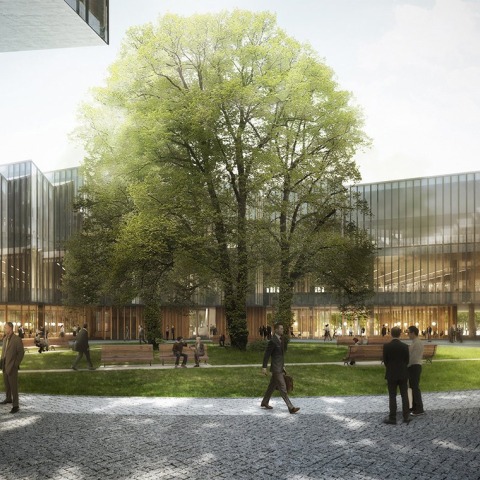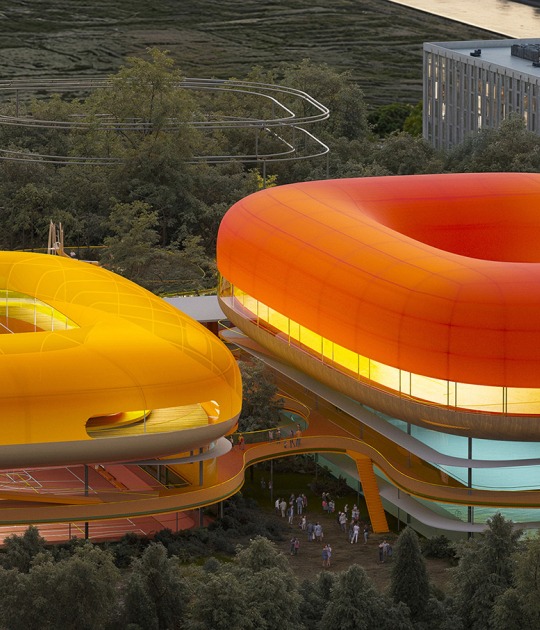Pharmaceutical giant AstraZeneca has revealed plans for its £330 million headquarters, which promises to bring 2,000 jobs to Cambridge.
The new site will bring together AstraZeneca’s small molecule and biologics research and development activity, opening up opportunities to exploit the promise of biologics and small molecule combinations. The CBC will be the new UK home for biologics research and protein engineering carried out by MedImmune, AstraZeneca’s biologics arm. MedImmune already employs around 500 people at Granta Park, to the south east of the city.
Herzog & de Meuron propose a two-storey disc with a unique oval shape that creates a continuous protected walk along the building. The disc is supported by transparent blocks of laboratories and amenities, which articulate a porous ground floor and form the primary spatial experience by framing a central courtyard. The courtyard is open to the public and encompasses the three main entrances to the building. The proportion and scale of the courtyard refer to the historical colleges in central Cambridge. Large trees and the green lawn in the centre of the courtyard establish a place for recreation and informal meetings. The internal design of the building promotes visible science in a synergetic, sharing environment. High-technology laboratories are separated from work and circulation spaces by translucent partitions, fostering a workplace environment based on communication and collaboration. A ring area on the first and second floor overlooking the central courtyard provides a large diversity of spaces and arrangements for employees to meet, work and exchange. The saw-tooth roof brings top light into the deep floor plates. The zig-zag geometry of the roof is continued vertically, structuring the facade and giving it this distinctive character.
The AstraZeneca Campus comprises a North and a South plot and is located on the Cambridge Biomedical Campus. The masterplan will be delivered in phases. The first phase includes the Global R&D Centre and Corporate Headquarters with the central courtyard on the North plot; it also includes the R&D Enabling Building and the Energy Centre on the South plot. Subsequent development will follow the completion of the first phase. Planned are a series of buildings on the South plot enclosing an elongated park that uses a similar formal planting language as the courtyard on the North plot. A consistent material palette throughout the North and the South plot unifies all buildings. The landscape concept creates a green carpet into which individual buildings, path systems and infrastructure are embedded and that allows a continuous visual connection between the separate elements.
Stefan Marbach, Senior Partner at Herzog & de Meuron, the architects selected to design the new site in Cambridge, said:
“In designing the new building we made reference to the historical colleges in central Cambridge, which are typically low-rise buildings enclosing a central courtyard. The building's proportions draw on this, as well as the open public access to the courtyard. The whole structure is connected in a single loop, providing short connections within the building and modern, innovative workspaces that support collaborative working. The ‘saw-tooth’ roof, which carries on through to the facade, aims to unify the appearance of the building and give it a distinctive character.”



























